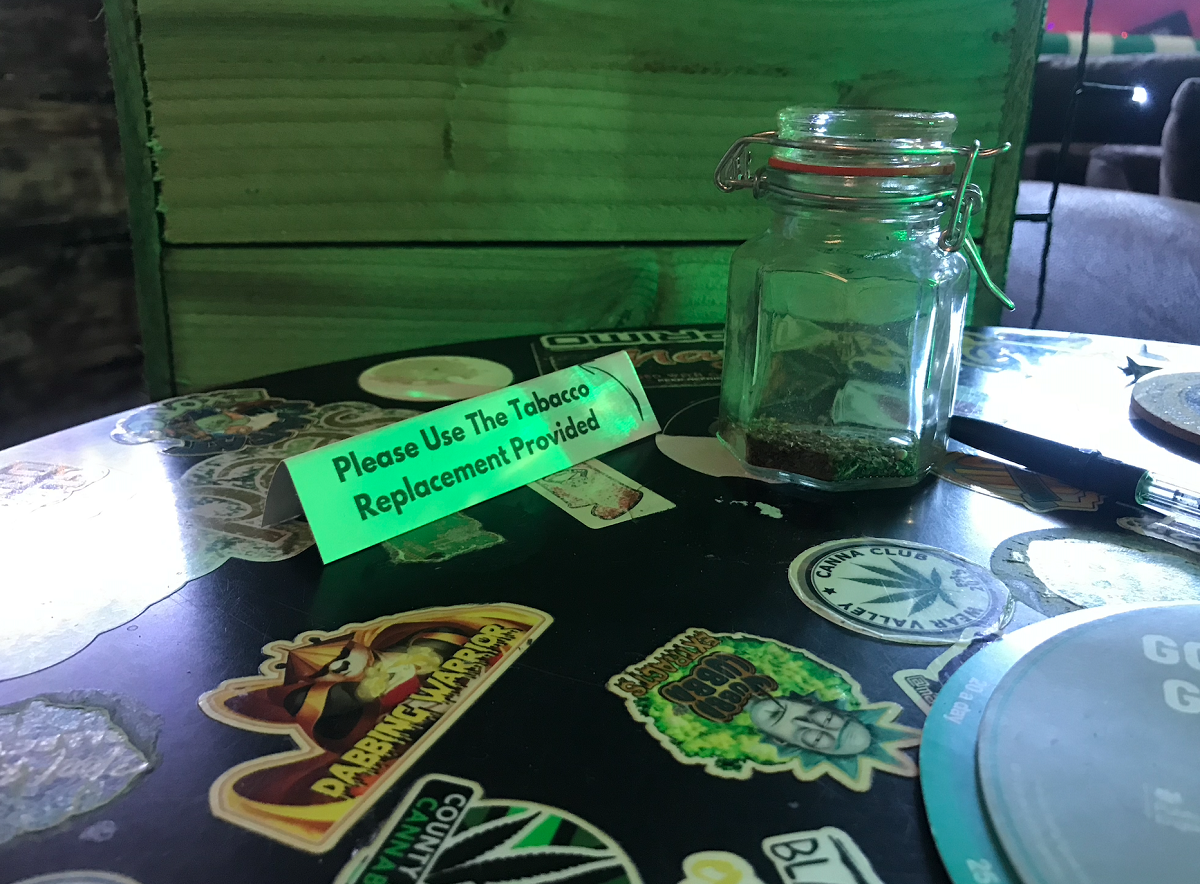Unsung heroes and a leap into the future with Teesside's joyous arts scene
With the council facing a £15m deficit and popular venues closing there's a tricky future for creatives to navigate
When you think of Teesside, what initially pops into your mind? Could it be the friendly lilt of the locals’ accent? The industrial heritage of the area? Or perhaps personal memories that tie you to the ebbs and flows of this valley.
I associate Teesside with a joyous, DIY culture scene that I’ve enjoyed soaking up since I was a kid. From the Middlesbrough Art Weekender to pop-up events in Stockton-on-Tees, the art scene in Teesside, particularly over the last decade, has grown into a vibrant and deeply collaborative ecosystem. This network of artists, institutions, councils and proactive locals, come together to make things happen in a way which feels genuinely rare in the UK.
But hey - maybe you know this already. Perhaps you’ve witnessed MIMA (Middlesbrough Institute of Modern Art) grow into a thriving community-engaged organisation, and the many independent art projects that have sprouted up across the region. But something I’d like to tell you about, something very exciting but perhaps little-known, is the virtual revolution of art which is taking place in the heart of Teesside.
This important digital revolution began during a time when we couldn’t physically interact with art – during the tumultuous days of 2020. In the depths of the pandemic, the arts were struggling, and so the creative community of Teesside responded. They came together to build virtual art exhibitions, filled with exciting work by local artists which audiences could enjoy from the comfort of their own homes.
This creation of accessible digital exhibitions which helped to keep the arts and culture scene of the region alive during this time, was spearheaded by three twenty-somethings working happily from the corners of their room.
Connor Clements, Charlie Wood and Gemma Tierney are the three Middlesbrough-based creatives, who joined forces to deliver high-quality, immersive virtual art shows, operating under the name, WetDovetail. Piecing together their expertise, they began to collaborate with local galleries all over the region, such as The Auxiliary and Pineapple Black. They created immersive and sometimes mind-bending virtual shows, which allowed galleries and artists to play within a world where they were not constrained by budgets, space or even gravity.
However, now the art world’s doors are wide open once again, the appetite for engaging with virtual exhibitions is not as heightened as it once was. But digital art exhibitions are still important – even if the captive audience they enjoyed during covid has changed.
Here’s why they’re vital to the evolution of the arts scene in Teesside. Firstly, they are radically accessible. WetDovetail, a Middlesbrough-based organisation, can create exhibitions involving local Teesside-based artists, which anyone with a smartphone, tablet or laptop can access from their own homes. For art-lovers who are not able to physically enter creative spaces, the accessible nature of these shows can be a lifeline for engaging with local culture. And the bonus is – they’re totally free.
Digital shows help to break down barriers that so many people face whilst trying to access local art. Also many art institutions are somewhat inaccessible – virtual spaces offer a solution to this.
Secondly, one of the most valuable aspects of virtual exhibitions is that they can exist forever. There’s no deadline, no de-installation date, and thus they can become permanent archives of contemporary art. This is especially important for the emerging working-class artists in Teesside, who already face a host of unfair and unjust barriers to the art world. These virtual showcases give their work, their voices - a platform to be witnessed and celebrated.
Ultimately, WetDovetail is archiving a whole generation of young Teesside-based artists' work, at the very beginning of their burgeoning careers, to the highest professional and technical degree. Without a doubt, the importance of these virtual archives is only going to grow in years to come.
Right now, the arts scene in Teesside is heading towards a crossroads.

WetDovetail Virtual Exhibition
With the council facing a £15 million deficit, and with many beloved art spaces closing, such as Pineapple Black, Base Camp and many others, the creative community will need to pull together and evolve in order to survive.
Stephen Irving, co-founder of Pineapple Black, tells The Teesside Lead: “Right now, Middlesbrough is heading towards a point, where in four to five months’ time, the amount of exhibition spaces, opportunities, and everything else, are going to be very limited”.
This is also because a few major galleries in the area will be closed this year for renovation.
In this undeniably precarious time for the arts in Teesside, the promise of virtual spaces could be a lifeline for artists and galleries – just as it was during the pandemic. And WetDovetail is full of exciting plans. With Connor Clements and Charlie Wood leading the project (Gemma Tierney has since moved on), they plan to make the best of both worlds – the physical and the digital – by merging the two together.
They’re currently exploring the concept of a touring gallery – using lightweight VR tech that they could present at various pop-up events across the region.
Through VR, the duo would create a virtual exhibition of the kind that has never been seen before. They would work with a number of galleries to transform their exhibitions into the virtual plane, and then connect the shows through a series of adjoining digital rooms. This experimental virtual collection of art would bring together works, people and institutions in a way which feels so exciting, radical and transformative – that it would surely revolutionise the current state of the arts, not just in Teesside, but beyond.
Liam Slevin, the friendly co-founder of The Auxiliary tells The Teesside Lead with a smile: “The outside perspective is that the area is just a shithole, and there’s no culture, there’s nothing happening here. That’s what I like about Teesside, it’s a crappy upstart.”

Diane is an environmental artist, activist and avid beach cleaner
But from humble beginnings, great things can grow. With organisations like WetDovetail, a tenacious art community, and the energy of the underdog – the (pixelated) sky is truly the limit for this vibrant, brilliant valley.
Subscribe to The Teesside Lead for our news, recommendations and investigations here.
You can also read the previous edition of The Teesside Lead here
Three Working-Class Queer Creatives from Teesside that You Need to Know
Will Hughes
Living in Stockton-on-Tees and working in Middlesbrough, Will is a driven emerging artist working across a wide variety of mediums – from sculpture to nose-tingling aroma. Their work is intimately informed by their experiences of being a queer non-binary person in the UK. Infusing their personal histories with concepts such as mass production, Americana, seduction and queer culture – they create ready-mades & casts that sprawl across gallery surfaces and your senses alike.
John James Perangie
John James Perangie is a Middlesbrough-based multidisciplinary artist. Working primarily across print, paint, textiles and sculpture, they create colourful, queer-coded artworks. They take clothing, accessories and other objects, which they then style and translate into queer artifacts (often in their signature pink colour palette). Through reclaiming and collaborating with these objects, they’re building an alternative queer archive – one which is fundamentally celebratory, non-conformist and uniquely powerful to behold.
Ella Fitzgerald
Ella Fitzgerald defines themselves as a new media artist, educator and researcher. Their work dives into class inequality, growing up in the strangeness of the internet age, the growing tentacles of AI, gender politics, and much more. Their piece ‘Queer Smoggie’ is particularly brilliant. This 35mm video + corresponding photographs document a performance Ella did in Redcar. Dressing up as a blue otherworldly alien, Ella journeyed around central spaces in the town, from the beachfront to the job centre. In this surreal performance, Ella explored and critiqued the queer, working-class alienation that many young people in this area face every day.
The Women Artists Making Waves in Teesside
There are so many incredible women artists in Teesside. Here is a quick-fire selection of some who are making waves in the region:
Annie O’Donnell
Sculptor, performer, Billingham-based researcher + former dancer. Annie explores identity, belonging, displacement, and questions what it means to be ‘of’ a place in her art. She is represented by Platform A Gallery, Middlesbrough.
Katie Tomlinson
Born in Teesside, Katie is a painter, sculptor and undoubtedly one of the brightest emerging artists in the UK. She’s exhibited in London, Manchester and Japan (just to name a few). Her work is centred around feminism and the experiences of women – diving into topics of consent, desire, power, and more. Her work is humorous, dark, playful, strange and inviting all at once.
Heather Carr
Heather is a playful painter and mark-maker from Teesside. She translates memories, photographs and visual research into abstract paintings that are full of life, and hidden meanings. This artist thinks through making, intuitively drawing on her experiences to create ever-evolving works of art.
Diane Watson
Diane is an environmental artist, activist and avid beach cleaner. Taking long walks along the Northeast coast, she collects the objects that wash onto our shores. Arranging these by theme, colour and subject, she creates beautiful aesthetic grid-like compositions. Her work illuminates the reality of our throwaway culture, and the crisis of plastic pollution which inundates our shorelines every day.
The Teesside Lead is now on Substack.
Become a Member, and get our most groundbreaking content first. Become a Founder, and join the newsroom’s internal conversation - meet the writers, the editors and more.





